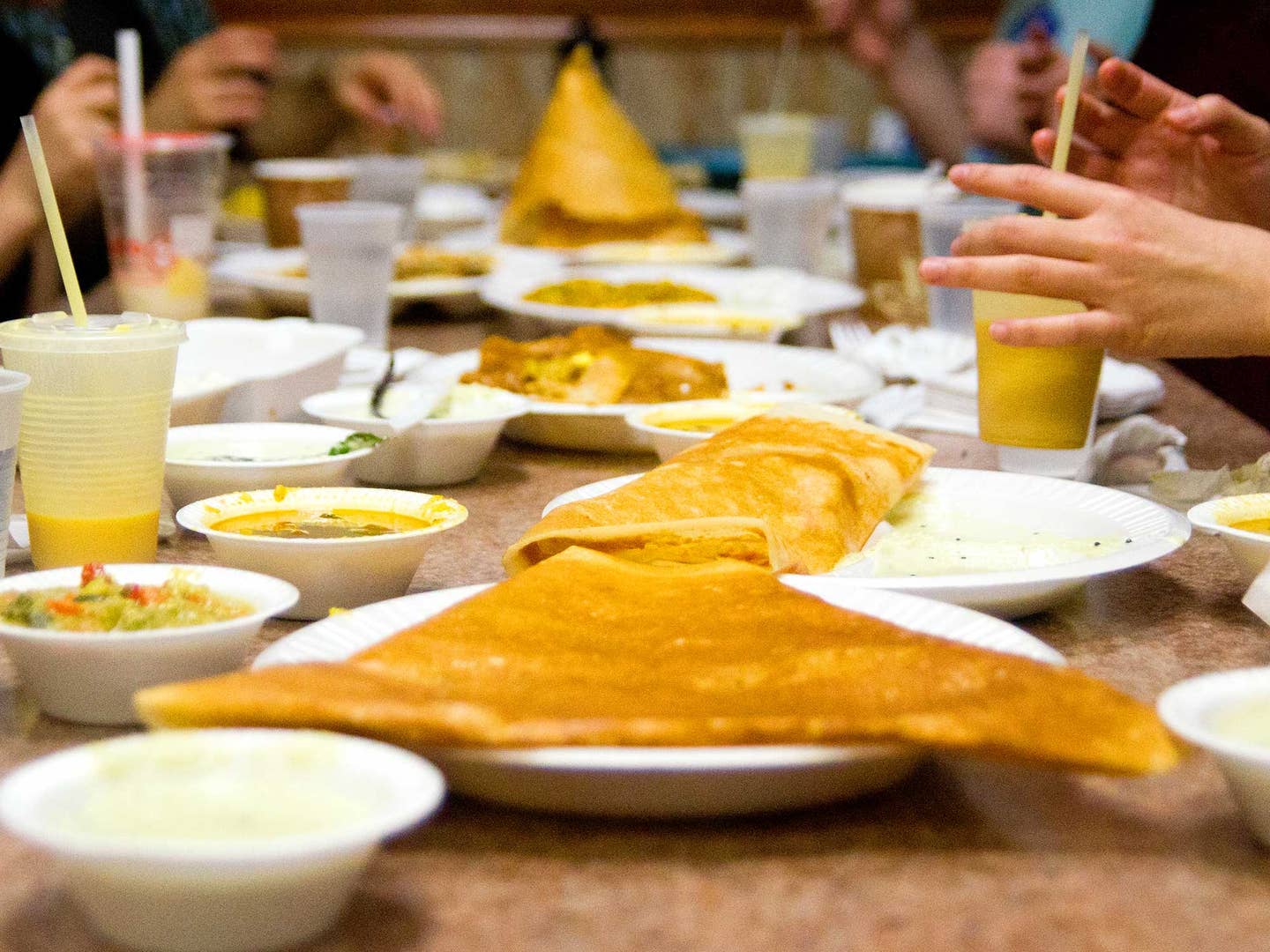
A Beginner’s Guide to the Great Wide World of Indian Dosa
How to navigate a dosa menu and find one big enough to lean over the edge of your table
Dosa—a savory pancake often eaten for breakfast—is not a dish for the prim and proper. You eat it messily. Your hands smell like masala for days. You feel a stoner-like urge to pass out immediately after you finish. It is, however, one of the most wide reaching, not to mention insanely craveable, contributions of southern Indian food canon.
The category of dishes called dosa is incredibly diverse. You may think it begins and ends with the masala (or potato-filled) variety, but in the south, there are countless versions, each with its own distinct cooking style and set of ingredients. Here is your beginner’s guide to the wide world of dosa, with assistance from Guna Raj, our family friend and master dosa maker and connoisseur. It doesn’t cover every single dosa you might encounter, but it’s more than enough to get you started.
Indians take their snacks seriously, and much of that snacking culture comes from the state of Gujarat. Here’s how to navigate the great wide world of the carby, the spicy, and the deliciously fried
Read More: A Field Guide to Eating in the Snackers’ Capital of India »
The Fundamentals
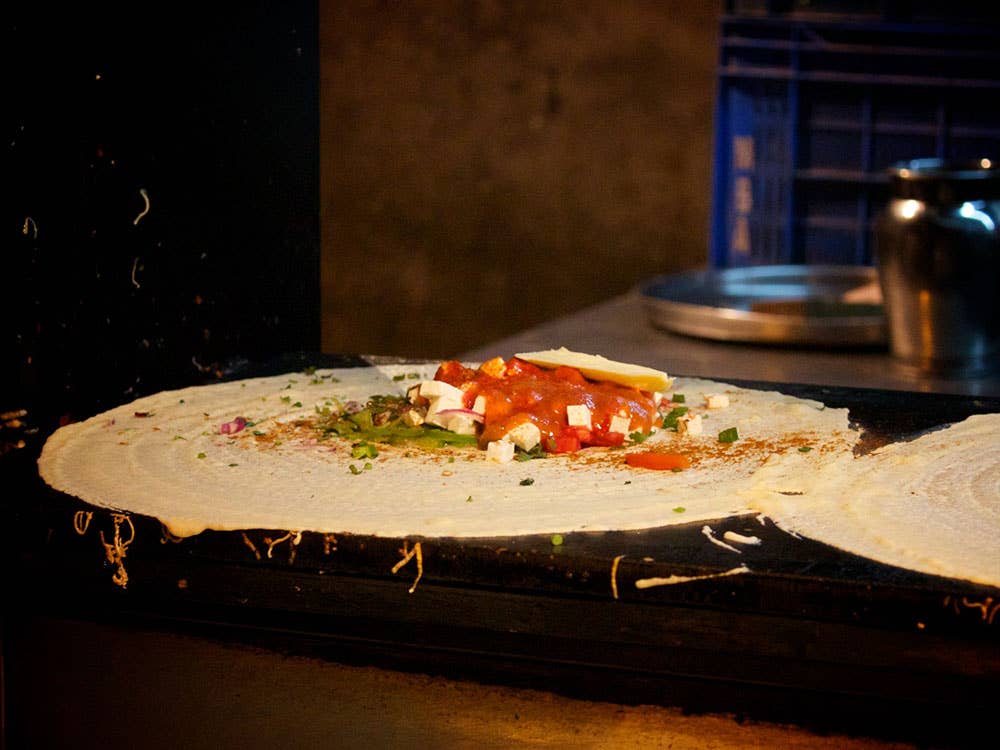
The basic dosa is made of a fermented mixture of rice and urad dal (black lentils) that’s been thinly spread out on a griddle and cooked until crisp on the edges and soft on the inside—very similar to a crepe. The exact origins are somewhat contested, as the southern states of Karnataka and Tamil Nadu both claim to be the birthplace of the dosa. Regardless, you can find stellar dosas in both regions (as well as throughout the south).
Types of Dosa
Sada Dosa
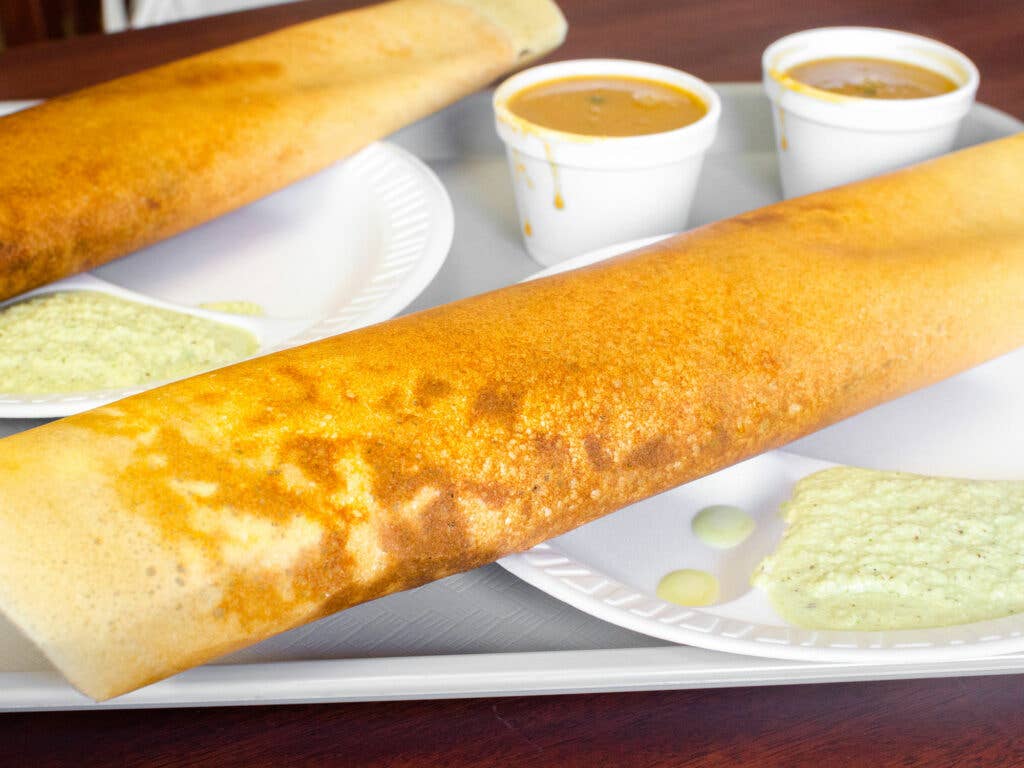
A dosa with nothing else on it! A beginner’s dosa for many.
Masala Dosa
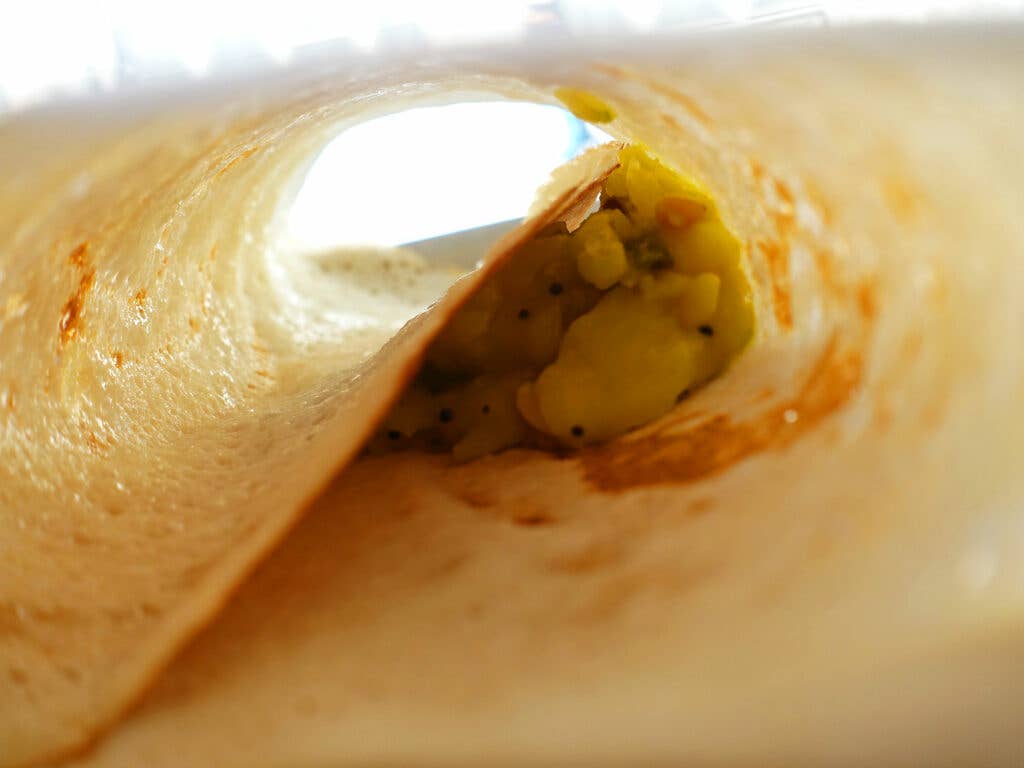
Filled with mashed-but-still-chunky potatoes spiced with mustard seeds, chilies, turmeric, and asafetida. The potato mixture nicely stains the bottom of the dosa, leaving it extra oily and flavorful.
Mysore Masala Dosa
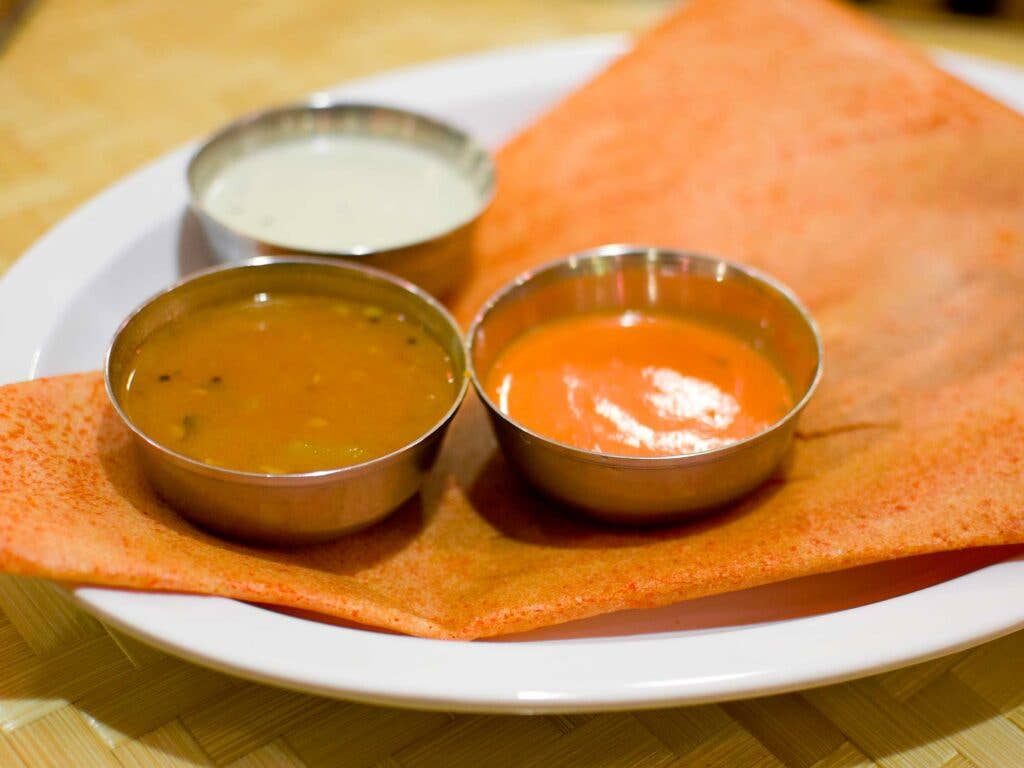
The lining of the dosa gets spread with a thick layer of ghee-infused gunpowder (a popular South Indian seasoning powder with a red chile base and ground dry lentils for crunch) before receiving its potato filling. The gunpowder lends the dosa a spicy kick and a fiery hue on the inside.
Rava Dosa
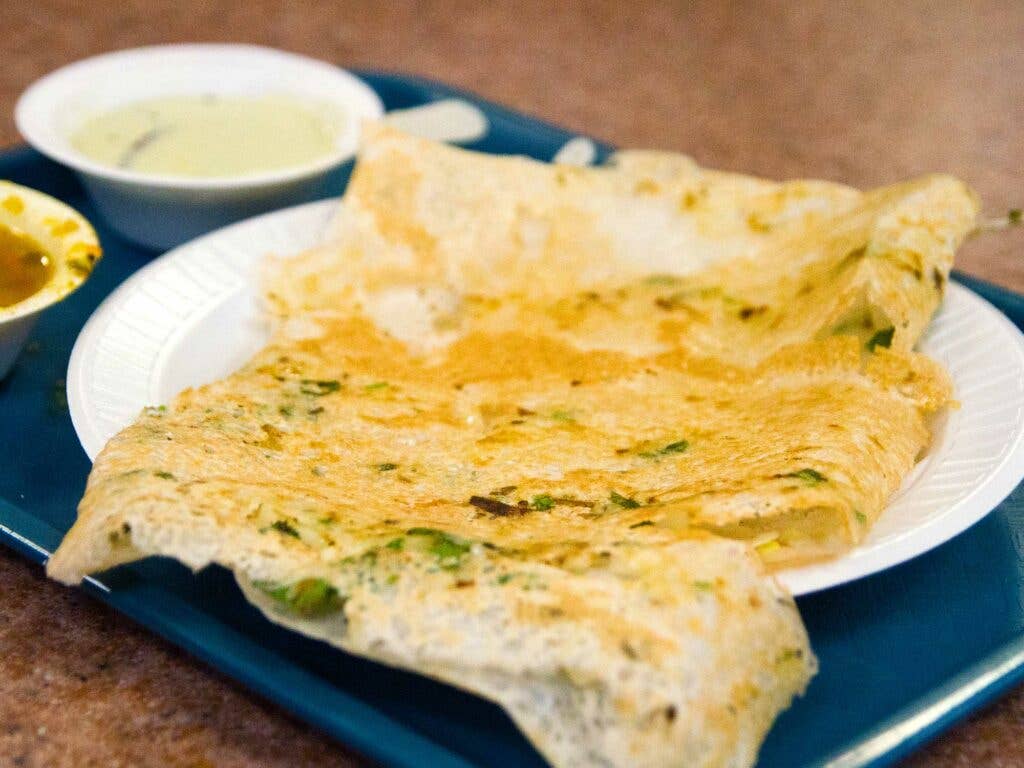
For those who like it extra crispy! The batter is pretty different from your standard dosa mix; it combines cream of wheat, buttermilk, finely chopped onions, and ginger. All this contributes to making a dosa that’s thin and crunchy all over, and speckled with pockets of heat from chilies and a refreshing kick of ginger.
Paper Dosa
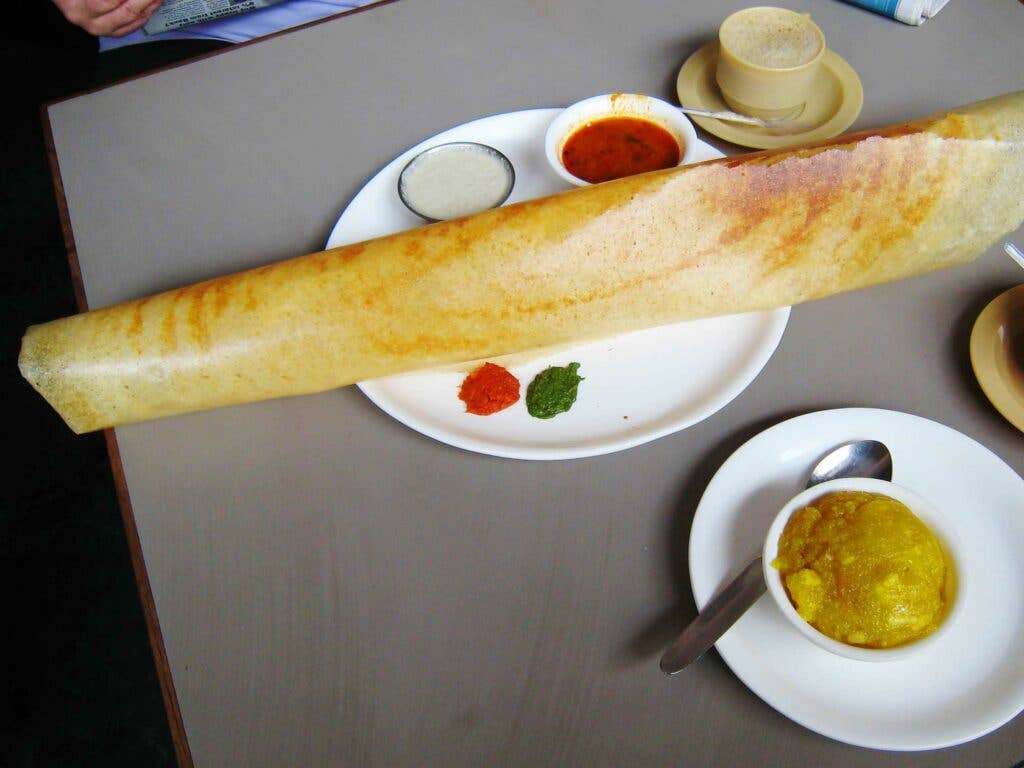
As the name suggests, this dosa is quite literally as thin as paper. It’s the flakiest of all the dosa varieties. Because it’s spread so finely on the griddle, paper dosa can stretch out several feet—making for a great presentation when brought out to your table.
Set Dosa

While the origins of other five varieties are a toss-up between Karnataka and Tamil Nadu, set dosa is distinctly a product of Karnataka. It looks like a stack of pancakes, and the batter is poured a lot thicker than your standard dosa, yielding a richer, heftier round.
Four Other Dosa Variations to Try
In addition to dosas, there are a few other members of the savory pancake family worth mentioning. While they aren’t explicitly called “dosas,” their ingredient lists and preparations are dosa-like enough that they often get invited to the party anyway.
Uttapam
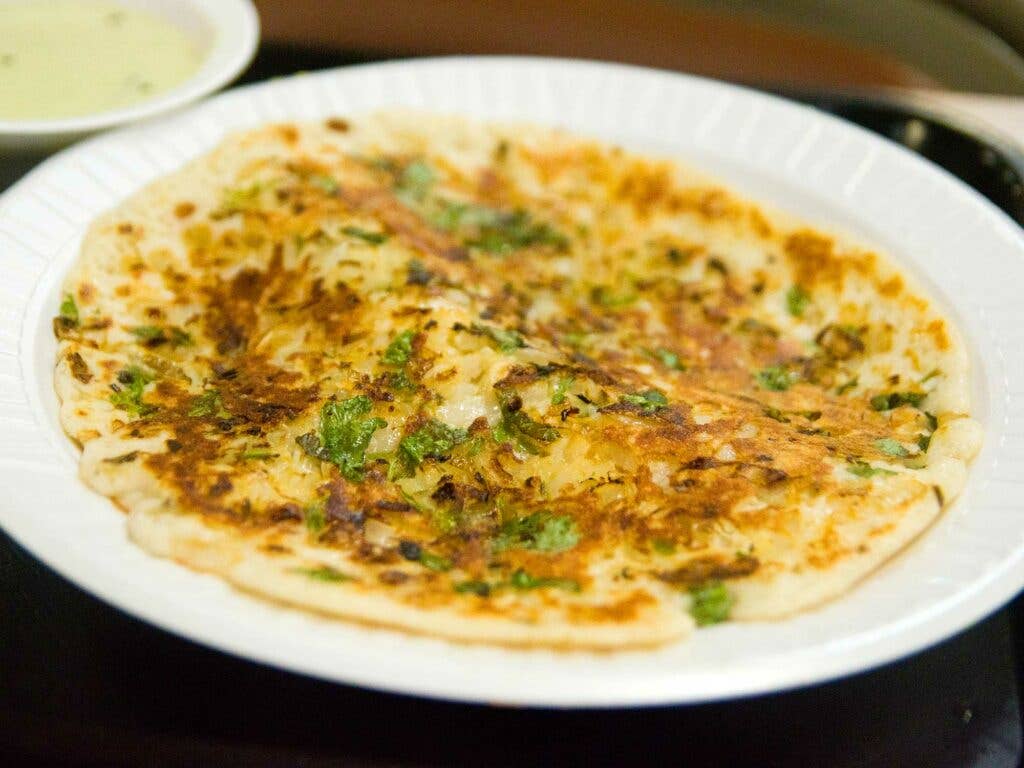
Also native to Tamil Nadu/Karnataka, uttapam is known for being smaller and much thicker than a standard dosa, with its toppings (chilies, onions, tomatoes, and green peas are all common) added straight into the batter, like with rava dosa.
Pesa Rattu
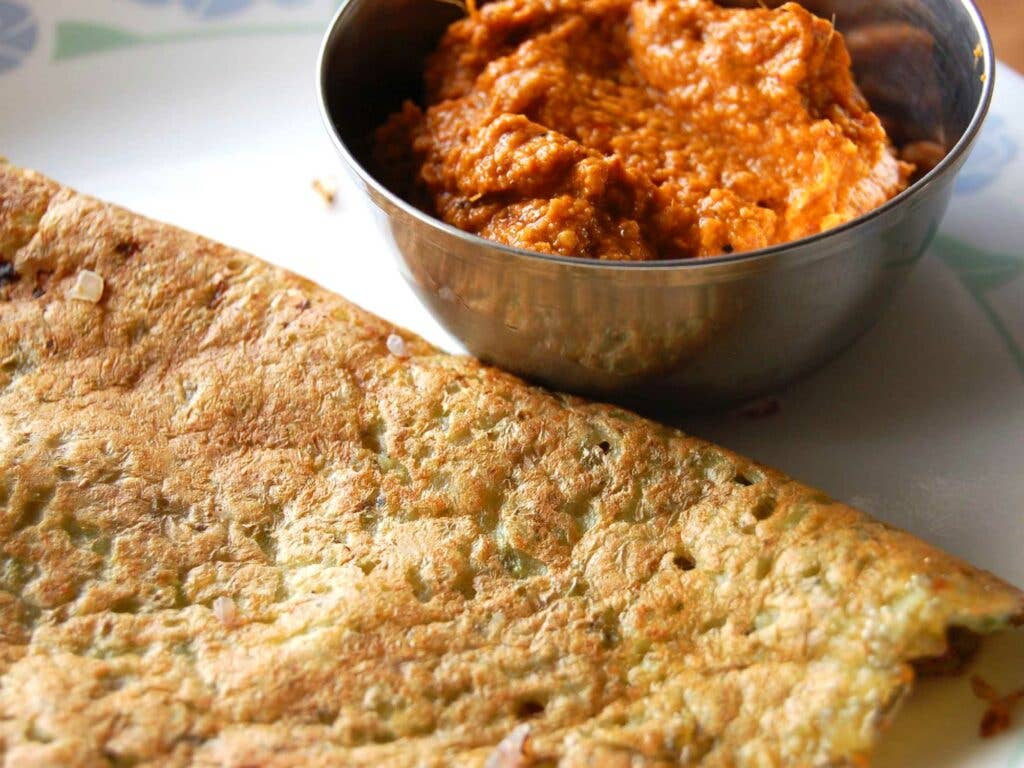
The no-carb dosa from Andhra, located on India's southeastern coast. Pesa rattu is made entirely of toasted and ground moong dal (mung beans). Because it doesn't get fermented, pesa rattu lacks the distinctly sour flavor of a standard dosa; it's more of an earthy, funky bite. As with uttapam, pesa rattu is poured thick, with the vegetables and seasonings mixed right in.
Appam
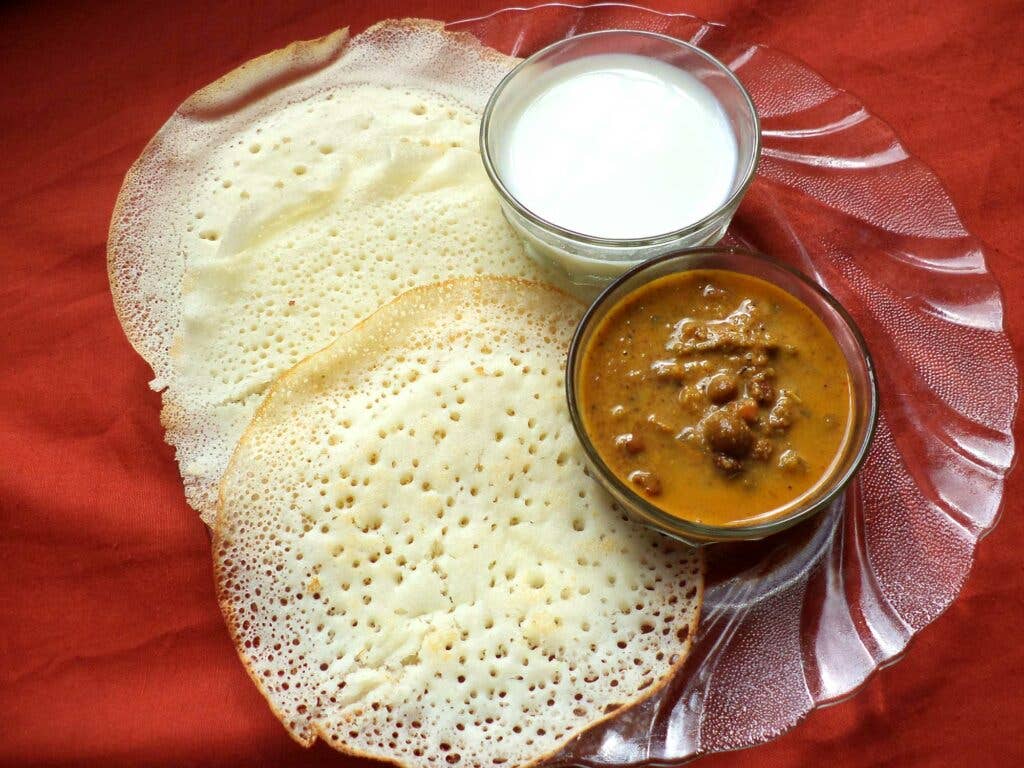
Kerala's spin on the dosa is loaded with coconut, a staple of the region's crops and cuisine. The batter is made out of rice flour and coconut milk, and fermented using liquor or beer. Appam is cooked in a special shallow bowl that gives the final dish its signature basin-like shape. Thanks to the coconut milk, it's also slightly sweeter and firmer than a regular dosa—very similar to a Sri Lankan hopper.
Adai
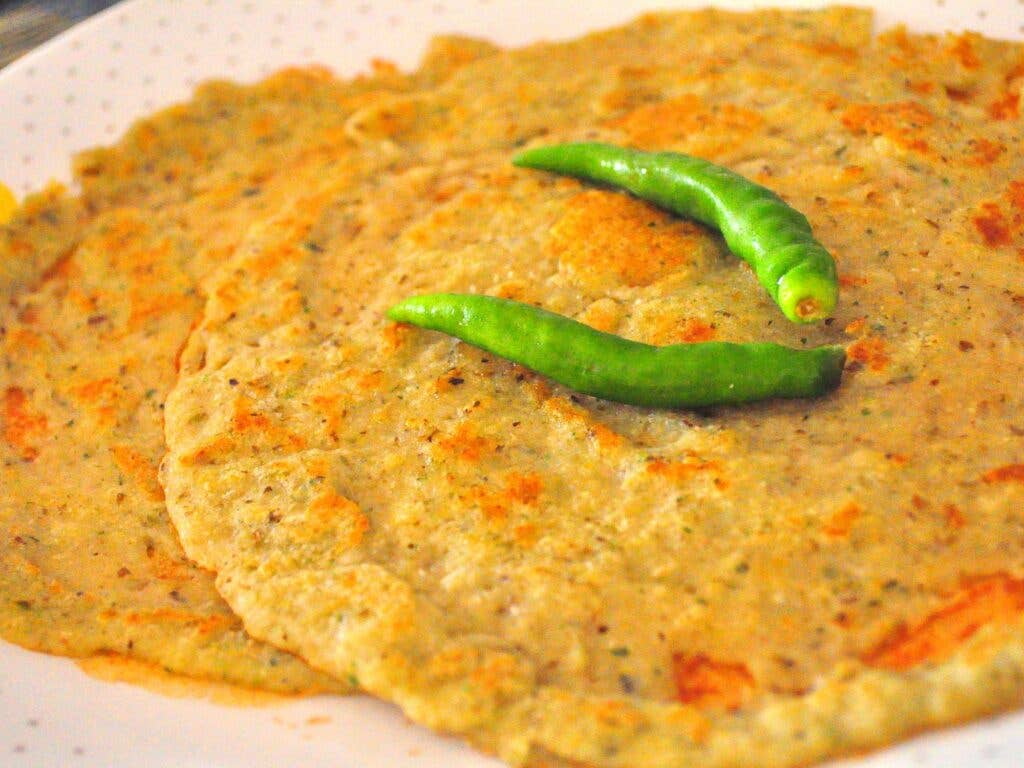
Very popular in Tamil Nadu, adai is made from combining three different kinds of lentils—usually chickpeas, moong dal, and urad dal. The end result is small but hefty, sometimes stuffed with ingredients like cilantro and onions—but often served without these fillings.
Mango is only the beginning. How to make your own with mint, curry leaves, and even marijuana
A Field Guide to the Great Wide World of Indian Lassi
Basic Accompaniments
Sides are a non-negotiable part of the dosa experience. Not only do dosas (and their variants) have excellent sopping capabilities, but the pungency of Indian condiments is the perfect compliment to the pancake’s sour savoriness, even when it’s already filled with seasonings.
Sambar
A spicy, chunky, slightly bitter stew whose primary ingredients include lentils, vegetables, tamarind, and curry leaves. The dosa gets dipped into sambar for flavoring; once you finish your dosa, you drink up the rest of the soup. Eating dosa with sambar is a practice that originated in Tamil Nadu, but has since become a standard operating procedure throughout India.
Chutney
The most popular chutney to pair with dosa is coconut—a chunky sauce that can have a wide range of flavors, from bitter to sweet to very mild, depending on who’s making it. Coconut chutney is to dosa like mustard is to hot dogs: a necessity.
Fork and Knife
Just kidding! Please do everyone a favor and don’t ever eat your dosa with a fork and knife. Dosas are a hands-only operation.
Priya Krishna is a freelance food writer and the author of Ultimate Dining Hall Hacks. Follow her on Twitter at @PKGourmet. Shailendra Krishna is her father and mango whisperer.
Keep Reading
Continue to Next Story










